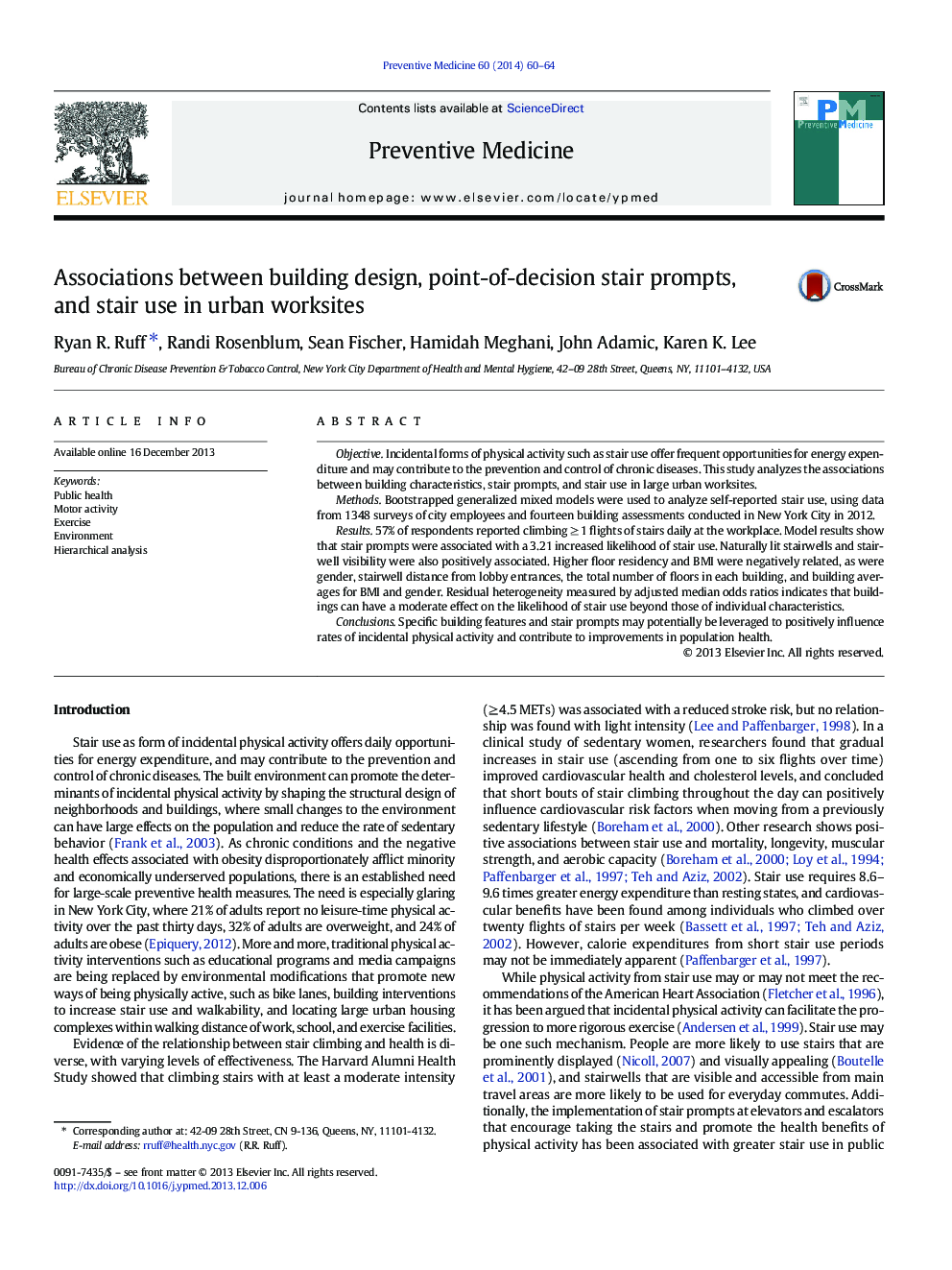| Article ID | Journal | Published Year | Pages | File Type |
|---|---|---|---|---|
| 6047357 | Preventive Medicine | 2014 | 5 Pages |
â¢We modeled the self-reported stair use of employees in fourteen city buildingsâ¢Generalized hierarchical linear models were used with nested case bootstrappingâ¢We report positive effects of stair prompts, naturally lit stairwells, and visibility on stair useâ¢High body mass index (BMI) and increased floor residency were negatively associatedâ¢Residual model heterogeneity implies a moderate potential building effect on stair use
ObjectiveIncidental forms of physical activity such as stair use offer frequent opportunities for energy expenditure and may contribute to the prevention and control of chronic diseases. This study analyzes the associations between building characteristics, stair prompts, and stair use in large urban worksites.MethodsBootstrapped generalized mixed models were used to analyze self-reported stair use, using data from 1348 surveys of city employees and fourteen building assessments conducted in New York City in 2012.Results57% of respondents reported climbing â¥Â 1 flights of stairs daily at the workplace. Model results show that stair prompts were associated with a 3.21 increased likelihood of stair use. Naturally lit stairwells and stairwell visibility were also positively associated. Higher floor residency and BMI were negatively related, as were gender, stairwell distance from lobby entrances, the total number of floors in each building, and building averages for BMI and gender. Residual heterogeneity measured by adjusted median odds ratios indicates that buildings can have a moderate effect on the likelihood of stair use beyond those of individual characteristics.ConclusionsSpecific building features and stair prompts may potentially be leveraged to positively influence rates of incidental physical activity and contribute to improvements in population health.
